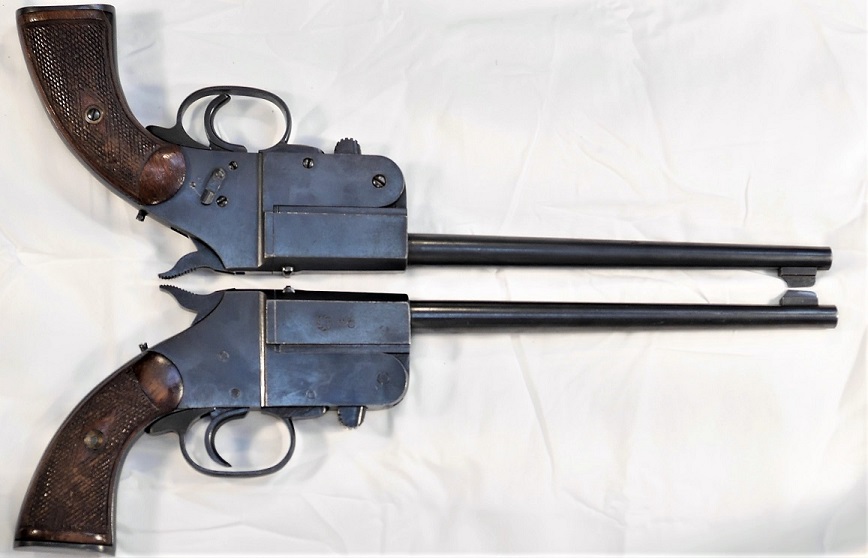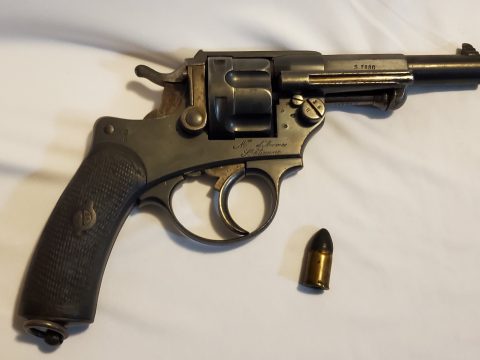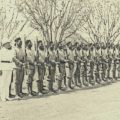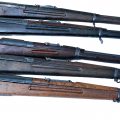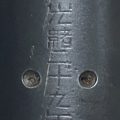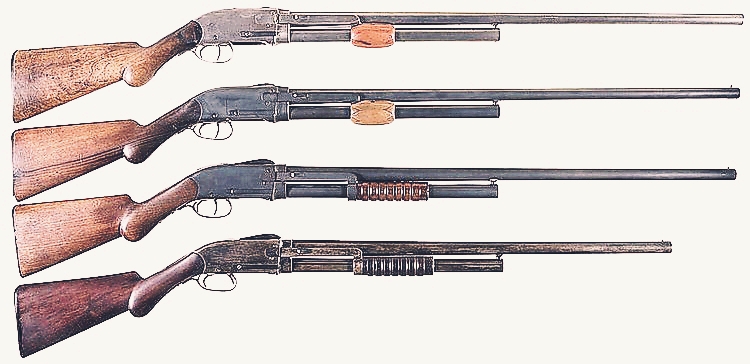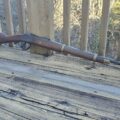
There are a number of military firearms that were used by Thailand on which there is little to no information readily available. Unfortunately, whenever you are dealing with firearms where there is little to no information on them, people tend to speculate with little to no evidence trying to explain their existence or use. Whether intentional or not originally, it is very easy for such speculation when conveyed to be misinterpreted and repeated as factually correct. That’s the case with this pistol, which generally referred to as the “Siamese/Thai mystery pistol”

It seems that the only concrete facts commonly in circulation about this pistol are that it is a single shot pistol and that it’s seemingly chambered for the 8x52r Siamese cartridge. While there are production pistols chambered for rifle cartridges, they are generally not used by military forces. It is here where the baseless speculation seems to begin: for what purpose was this unusual pistol created?
A common explanation goes that: In the 1920s the Siamese military were still using elephants for logistical movements. Elephants, like any animal used by the military, occasionally suffer catastrophic, untreatable injuries in the line of duty where the only humane course of action remaining is to euthanize the suffering animal.

The standard field mechanism for this would be a single pistol shot to the animal’s head, for a quick and painless as possible death. However, elephant skulls are so thick that a standard issue service pistol is unlikely to be able to accomplish this. As the commonly told origin story of this pistol goes, the Siamese came up with a solution: designing a pistol (this one) to use a rifle cartridge to be used for this purpose.
As mentioned this explanation is simply speculation as there is no evidence to support this story and, more importantly, there are several observations that contradict it
To start with: this pistol seems to actually have a name, or at least a consistent (likely modern) designator: Type 66. Kodtaharn, a Thailand-based Facebook group of Thai military enthusiasts and researchers, maintains a collection of photographs from various military museum exhibits in the country. As they have generously made their photographs available, it can be seen that at least two different military-run Thai museums have displays of this pistol and label them “Type 66.”


Unfortunately, those museum positions are not considered very prestigious and the people assigned to them aren’t always interested in doing research. This has led to labels not always being correct on the displays. Based on observations (detailed below), that is likely the case for these pistols and Type 66 would’ve been the original military service designator. The likely explanation why both museums seem to identify the pistol this way is one museum may have guessed at the designation, and the other just followed suit. However, since both museums have designated it as such it is best to follow suit and use the same nomenclature until a more fitting one is discovered.
For a general description of the Type 66 pistol: it is a single shot break action pistol approximately 5” (127 mm) high with an overall length of 15.375” (390 mm).The Pistol weighs in at 2 lbs 8.2 oz (1.139 kg). It has a rifled barrel with a length of approximately 8.375” (212 mm). The barrel locks on a lug on the underside of the chamber by way of a spring-powered latch.

It has a manual safety which can be engaged either when it’s cocked or decoked, which locks the trigger and the hammer. The Type 66 has a rebounding hammer which can only strike the firing pin when the trigger is pulled. On the back strap there is a screw for adjusting the mainspring tension. The barrel is very thin, with it only about .65” (16.6 mm) at the base and 0.47” (11.9 mm) in diameter at the muzzle. That puts the barrel walls at only .01” (2 mm) at the muzzle.

Markings on the pistol are on the minimalist side. On the right side of the pistol there is a chakra, the symbol of the Thai military and a serial number in Thai numerals.

If you remove the grips, you find the serial number stamped in Arabic numerals on the frame as well as the back side of the wood grips.

On all three of the examples I have seen up close, there is also a number stamped in Arabic numerals on the bottom of the pistol. These numbers do not appear to be related to each other in some sort of sequential way and seem random at a glance. There is a common thread between them in the form of them all being a palindrome, or the same backwards or forward. Those stamped numbers appear to have been stamped on the pistols after they had already been blued. While the examples that are still in Thailand haven’t been closely inspected, they do not appear to have any markings on the base of the pistol grip, so current speculation is that perhaps these numbers are an import serial numbers.

These pistols were not mass produced so there are some slight variations between pistols. For example, between the two examples I have access to, there is a 0.0625” (1.5875 mm) difference in the length of their barrels and a difference of .07” (1.9 mm) in how far their extractors kick out. There is also a difference of .06” (1.6 mm) in the height between the front sight, and a difference in how far the action opens. From the bottom of the frame to the top of the breach when fully open there is a difference of a .04” (1.1 mm).

While there aren’t any known official Thai government sources of information on the Type 66 pistol, a few things can be concluded based on observations thus far. From observations of the serial numbers on known examples (1, 6, 8, 12, 16, 30, 33, and 48) it appears to indicate that approximately 50 examples were made. The thickness of the barrel indicates the pistol was not designed to take the standard 8x52r Siamese cartridge (the Type 66 cartridge), nor is the lock strong enough to handle the pressure (as one unfortunate individual found out the hard way) even if the barrel had been thicker. Since the chamber dimensions are that of the Type 66 cartridge, it can be inferred the pistol is intended to take a gallery load of the Type 66 cartridge.

Currently there are no known examples of the Type 66 gallery cartridge that have made their way into private hands of someone willing to disassemble and measure their components to determine the load data of them.
Circling back to the naming discussion, while there still is no direct evidence to rely on, broadly some conclusions can be inferred based on how the Thai arsenals were marking firearms during different time periods. It appears that the Thai arsenal did not start using Arabic numerals for anything on the firearms until at least 1940.

With the serial number stamped in Arabic numerals on some locations on the Type 66 pistol, that would indicate a manufacture year of 1940 or later. As the Type designation is traditionally based on the year of a adoption, that would suggest the pistol’s proper designation wouldn’t be 66, but something like 83 (1940) or higher. However, without additional firm information using the Thai military museums label of it being designated the Type 66 is best practice.
Unfortunately until more information is dug up there is a limit to what can be determined through observation. If you have a 8x52r gallery round that you wouldn’t mind disassembling (though even just weighing would help with at least making an educated guess of what i should approximately be) or have a Type 66 pistol in general, please let me know at SpacecowboyfromNJ@yahoo.com so it can be documented.

